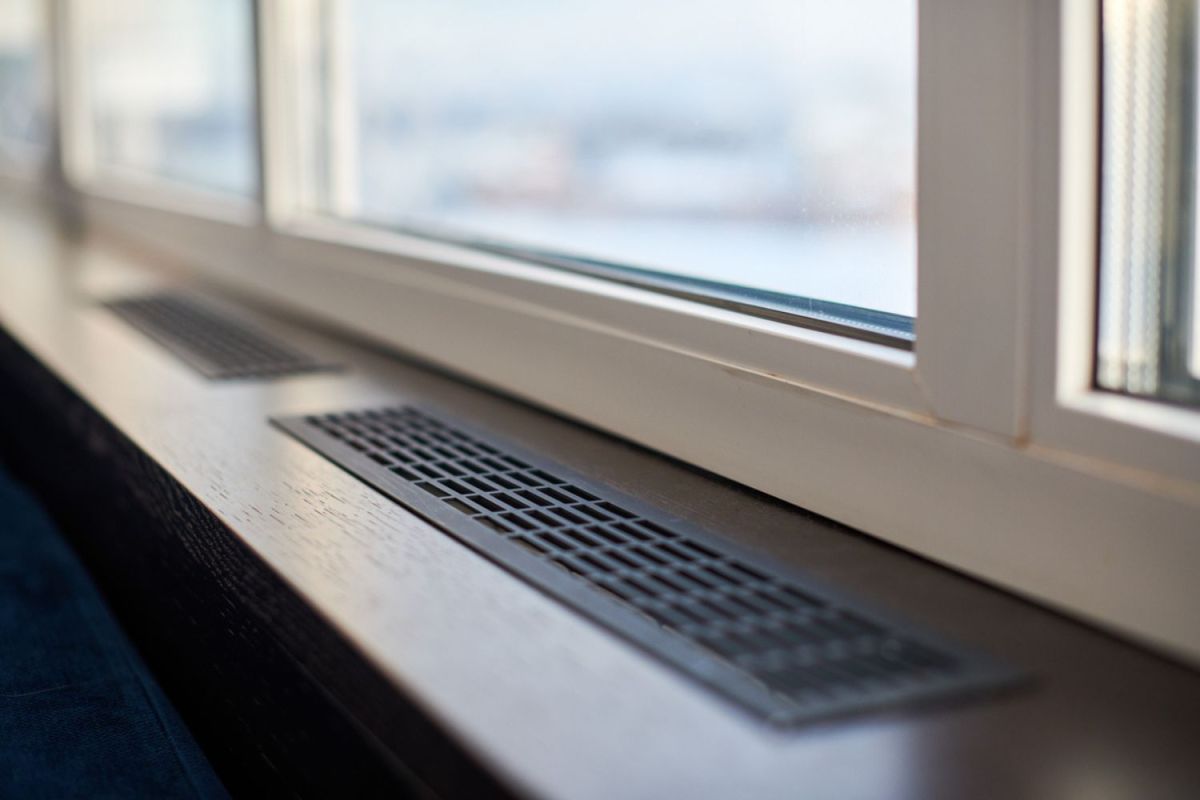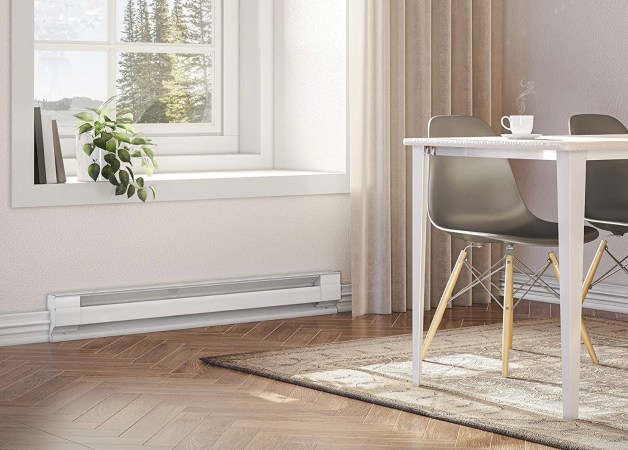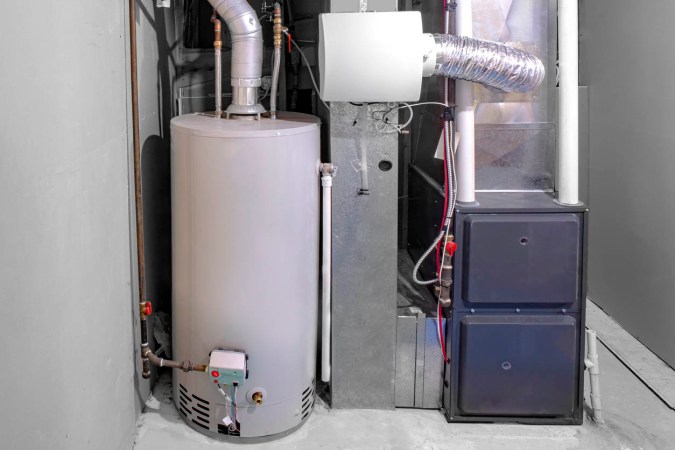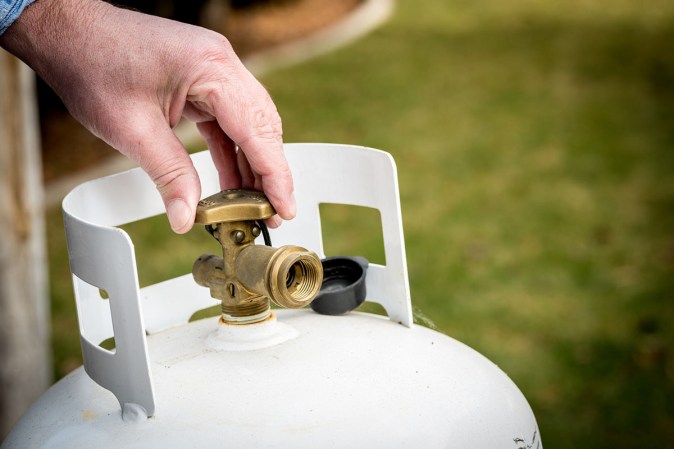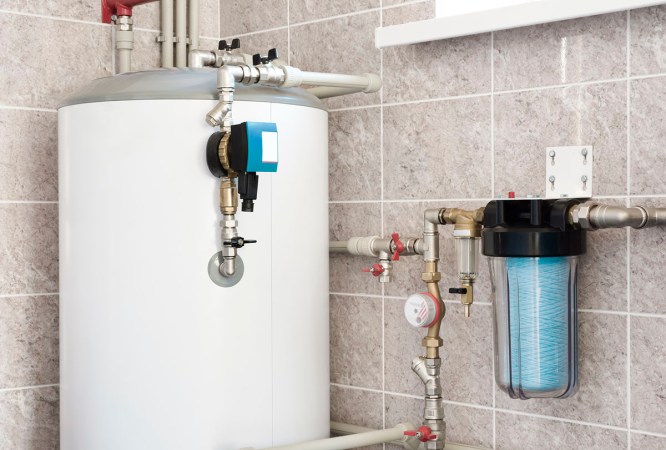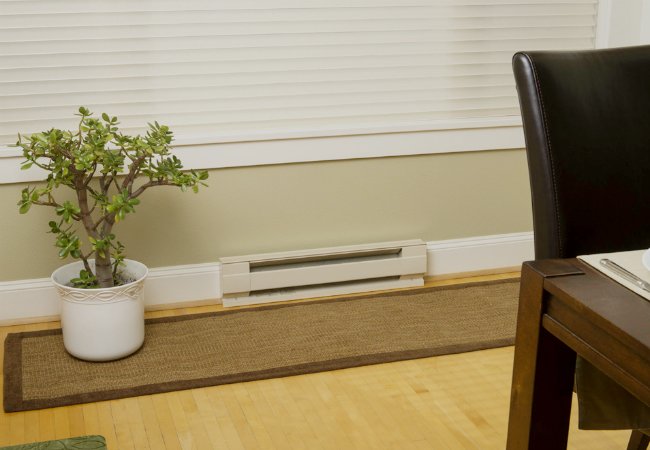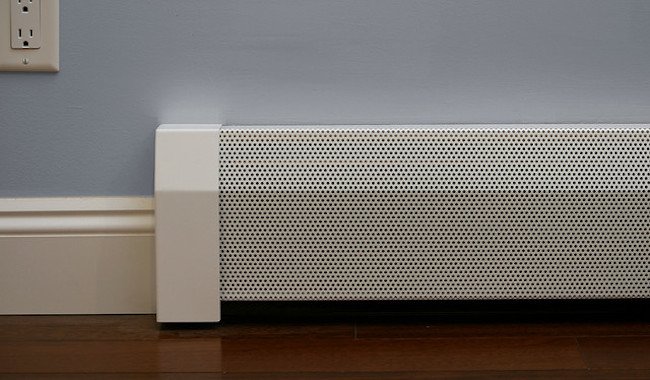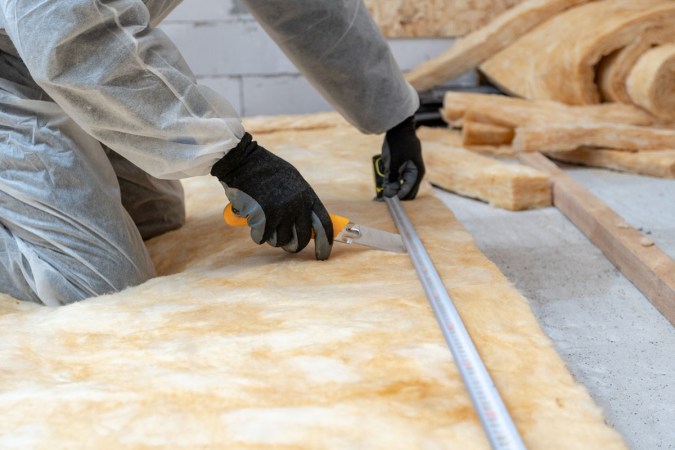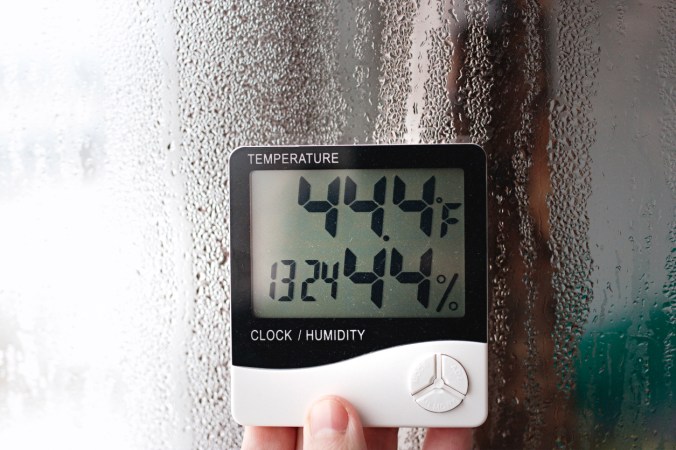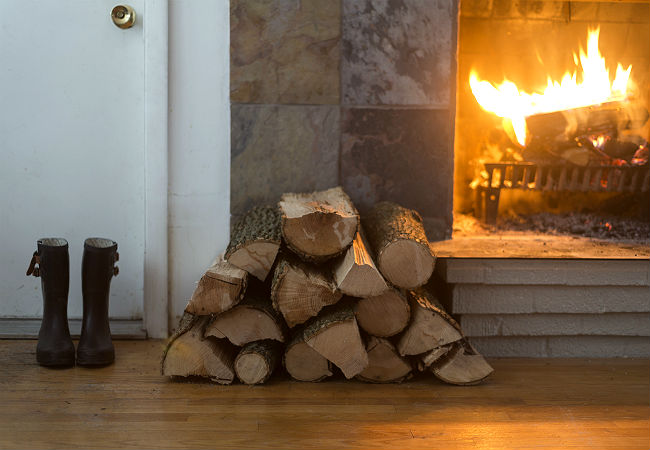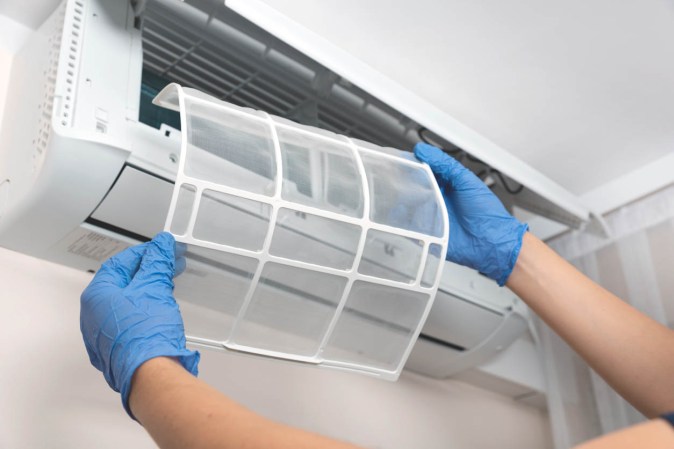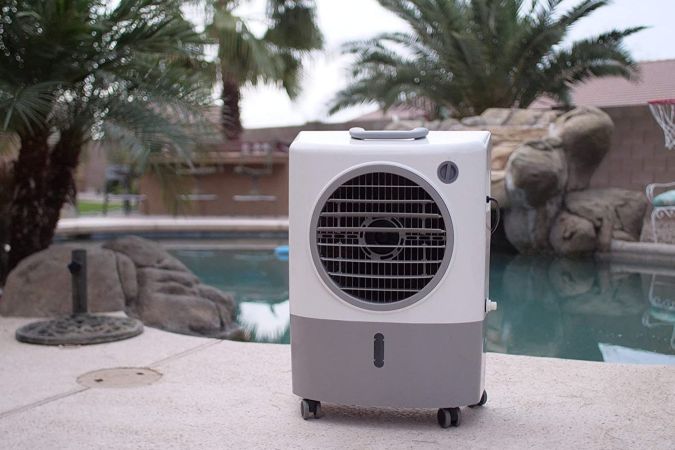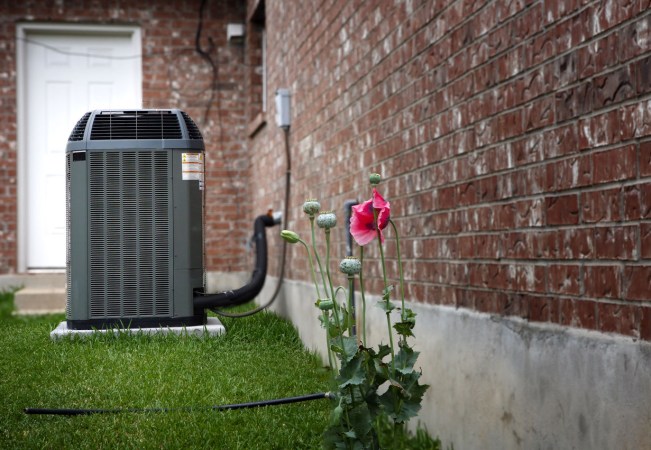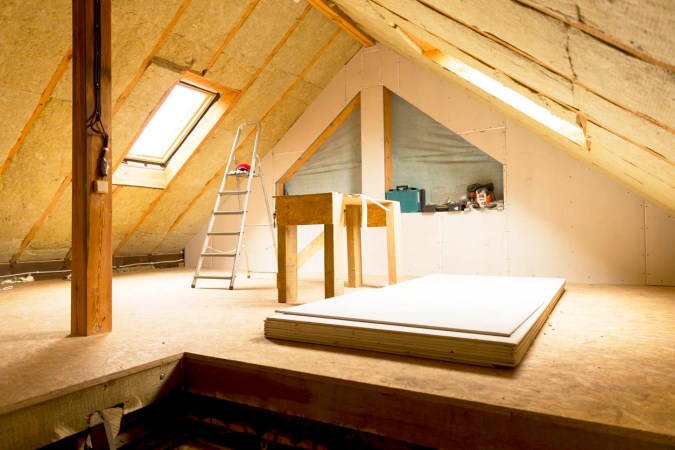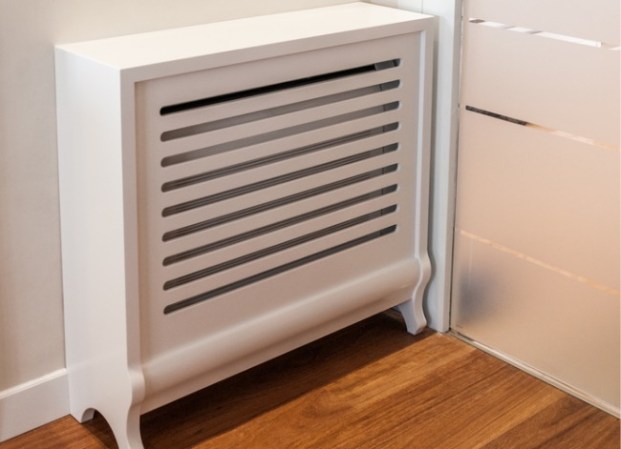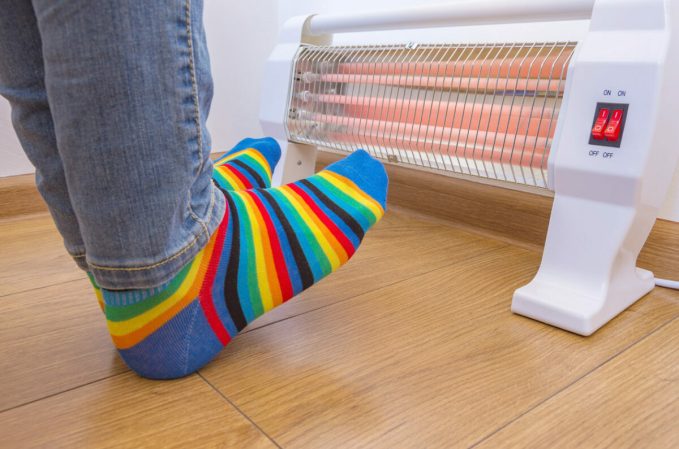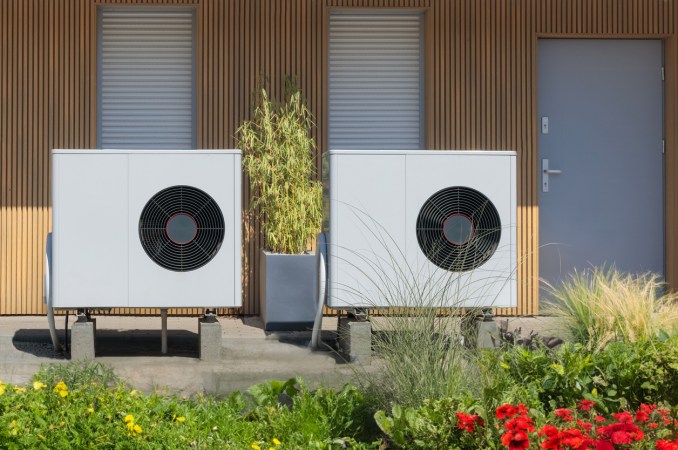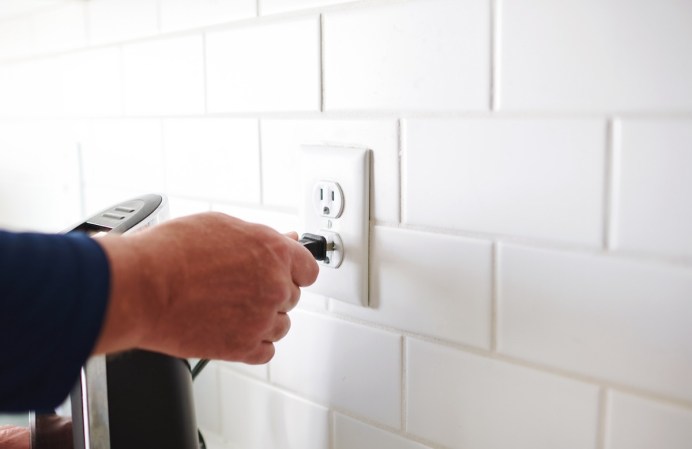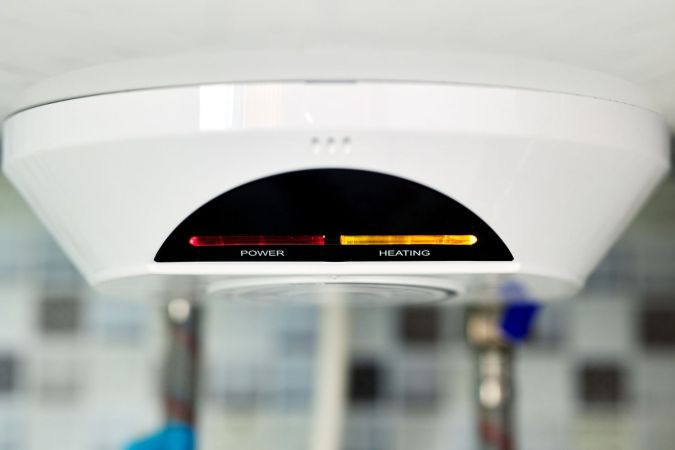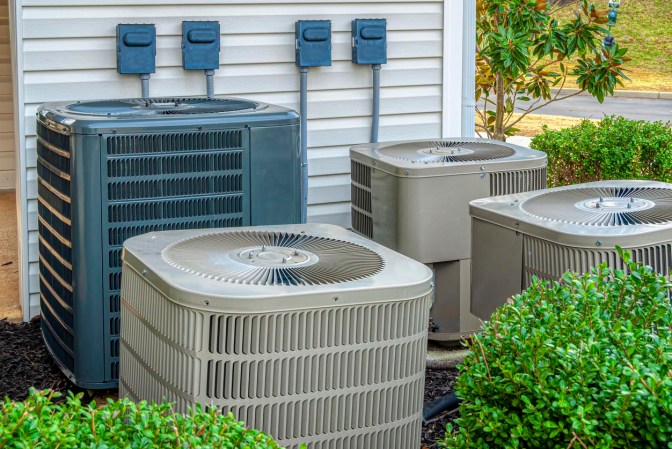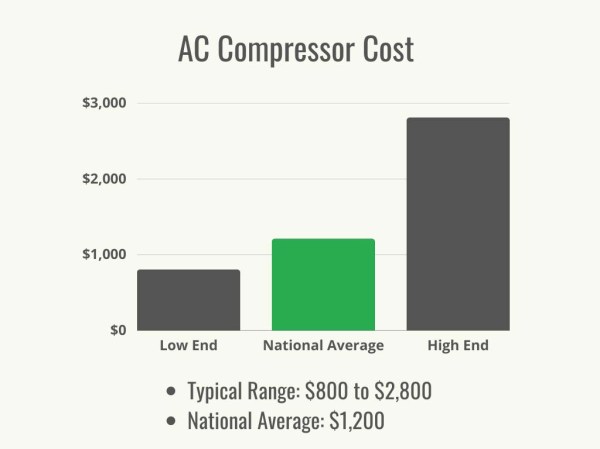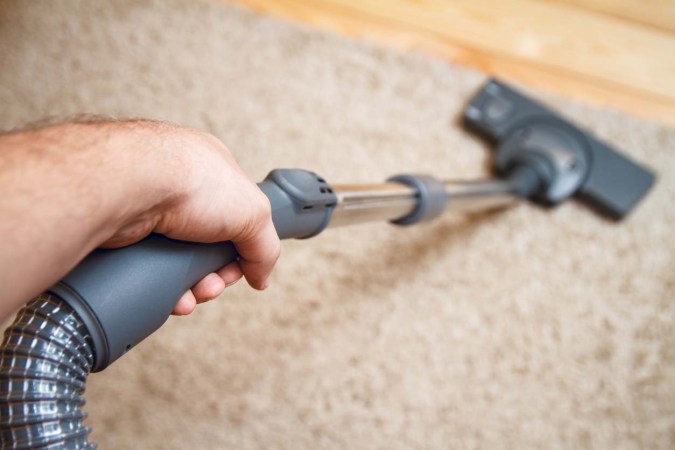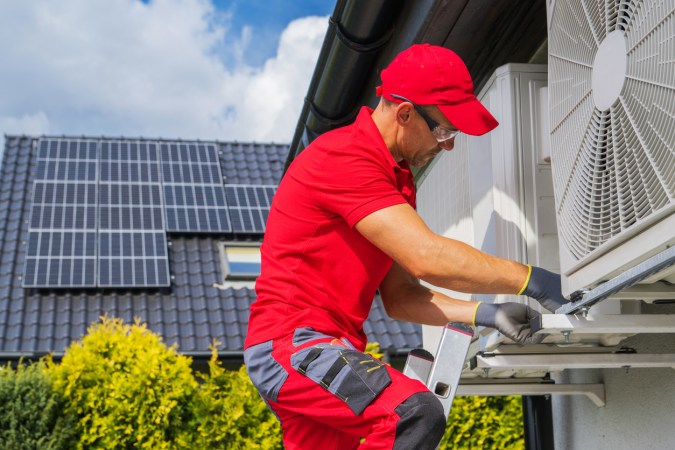We may earn revenue from the products available on this page and participate in affiliate programs. Learn More ›
Highlights
- The average baseboard heating cost is $860, though a typical range is $409 to $1,335.
- The home and room size, number of heating units, labor rates, running costs, and location are major considerations that homeowners will need to review as they calculate the cost to install baseboard heat.
- Many homeowners in certain climates prefer baseboard heating systems for several reasons: excellent zoning options, better energy conservation, fewer maintenance needs, and no ductwork installation requirements.
- The installation of baseboard heaters requires a trained technician’s knowledge of electrical systems and optimal air flow to ensure the unit runs efficiently and adequately, which is why most homeowners prefer having a professional installer complete the project.
Baseboard heating is a heating system that uses convection to heat rooms without ductwork or electricity. As a popular heating option for many homeowners, it can heat a room by using gas, electricity, or hot water. “Many homes only have baseboard heaters for their heating source,” explains Christopher Haas, expert electrician and owner at Haas & Sons Electric in Millersville, Maryland. “Depending on the room size, you would have one or more. Baseboard heaters work best in smaller rooms with less volume. They don’t have the means to move the air around like a conventional HVAC system with its large internal fan, so large rooms are not ideal.”
How much does baseboard heating cost? According to Angi and HomeAdvisor, a baseboard heating system ranges in price from $409 to $1,335, with many homeowners spending $860 on average. The cost to install baseboard heat can vary due to some important factors, including the size of the home and individual rooms, the number of heating units, local labor pricing, and geographic location.
The type of baseboard heating system also affects the overall cost. For instance, an electric baseboard heater is the most common and is typically more budget-friendly to install than a hot water, gas, or propane baseboard heater. When considering baseboard heater installation, homeowners will want to weigh the upfront costs against the long-term energy savings. Talking with a heating professional can help homeowners understand the size of the heating system they need while finding a price that works with their budget.
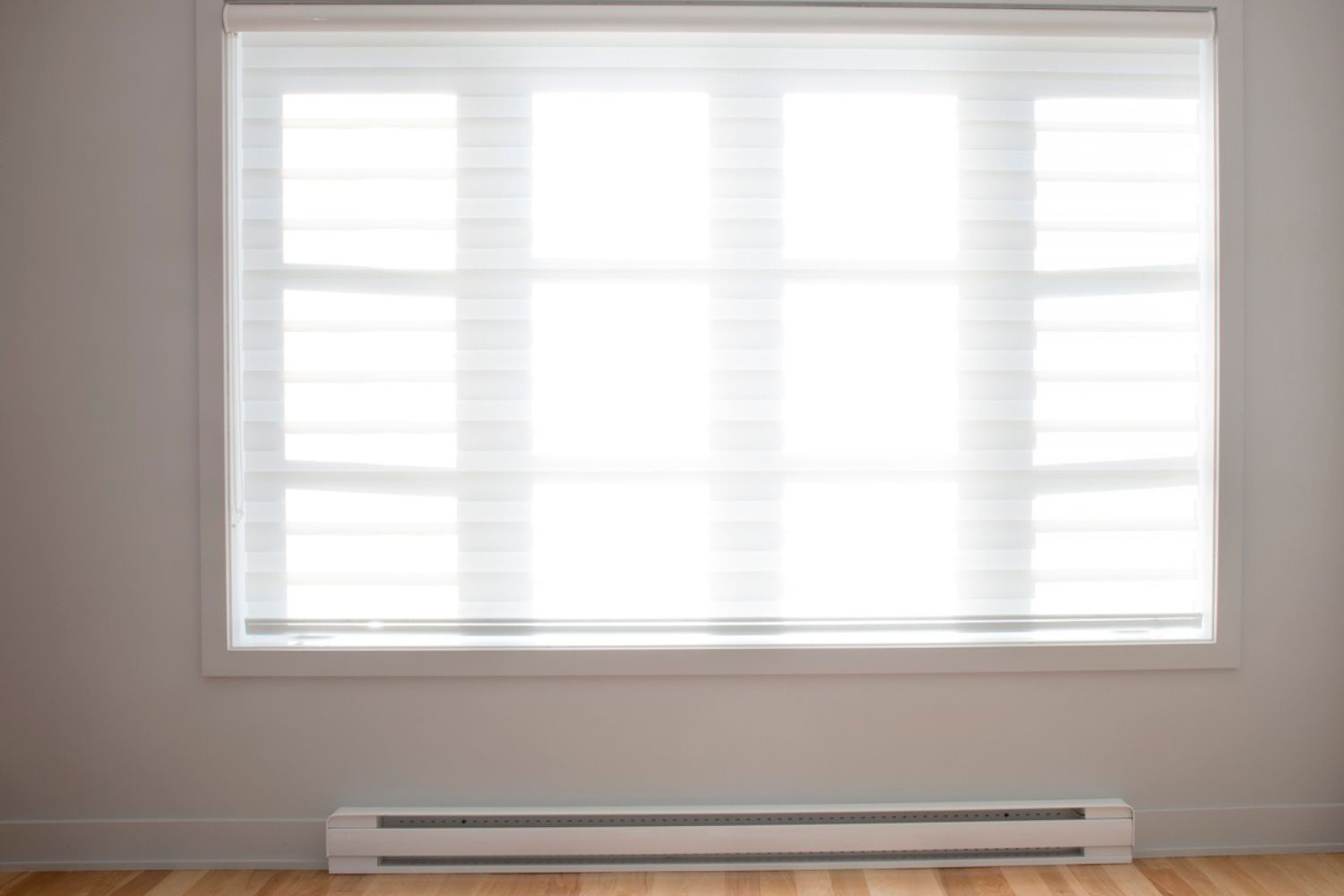
Factors in Calculating Baseboard Heating Cost
When homeowners are calculating baseboard heating costs, several factors influence the project total. The national average cost for baseboard radiator heat installation is $860, but it’s important for homeowners to note that this average may vary depending on home or room size, number of heating units, local labor prices, and geographic location. Taking all these factors into account can help homeowners realistically budget for baseboard heater installation.
Home or Room Size
The size of a home plays an important role in the overall baseboard heating cost. Larger homes typically require more extensive heating systems to ensure the entire home is adequately heated. As the square footage increases, more baseboard heaters or more powerful units are needed. The layout of a home can also affect the efficiency of the heaters, so the pro will carefully map out the system before the installation process to maximize the heaters’ capacity within the space.
Further, the size of a home influences whether electric, hot water, or gas baseboard heaters would work the best. Electric baseboard heaters are typically used for smaller spaces, while gas or hot water baseboard heaters may work better for larger homes due to their even heat distribution. The cost of each type of system and the installation expenses vary based on the size and layout of the home.
| Home Size | Average Cost (Materials Only) |
| 800 to 1,000 square feet | $2,400 to $2,800 |
| 1,200 to 1,400 square feet | $3,200 to $4,000 |
| 1,500 to 1,700 square feet | $4,000 to $4,800 |
| 1,800 to 2,200 square feet | $4,800 to $6,000 |
| 2,300 to 3,000 square feet | $6,400 to $8,000 |
Large rooms will typically need more than one baseboard heater to adequately heat the room, and some heating professionals may offer a discounted rate to install multiple heaters. Since baseboard heaters are used to heat a single room rather than an entire house, homeowners might choose to install heaters in only certain rooms to ensure that each room gets the right amount of heat for their comfort.
Baseboard heaters are available in two voltage options: 120 volts and 240 volts. While both are effective, the 240-volt units are more energy-efficient due to their lower amperage requirements. The higher-voltage option uses thinner heating elements, which results in better heat distribution and improved energy consumption. To make sure each room gets enough heat, it’s important for homeowners to choose a baseboard heater with the appropriate wattage that matches the room’s square footage.
As a rule of thumb, a single 500-square-foot room is best served with a 4,500-watt heating unit to adequately heat the space. This type of unit can cost from $300 to $1,000. Finding out how the size of a room impacts the overall price of baseboard heater installation can help homeowners budget for the project.
| Room Size | Watts Required | Average Cost (Materials Only) |
| 64 square feet | 500 watts | $35 to $150 |
| 80 square feet | 640 watts | $50 to $185 |
| 100 square feet | 900 watts | $75 to $250 |
| 150 square feet | 1,350 watts | $100 to $300 |
| 300 square feet | 2,700 watts | $150 to $700 |
| 400 square feet | 3,600 watts | $275 to $800 |
| 500 square feet | 4,500 watts | $300 to $1,000 |
Number of Units
The heating capacity of each baseboard heater depends on the wattage and amperage. A 500-square-foot room needs just one 4,500-watt unit (or a combination of multiple units that total 4,500 watts) to make sure the room gets enough heat. Homeowners can get a good idea of how many baseboard heating units they’ll need for their home by knowing their home size.
| Home Size | Average Number of Baseboard Heaters Needed |
| 800 to 1,000 square feet | 6 to 7 |
| 1,200 to 1,400 square feet | 8 to 10 |
| 1,500 to 1,700 square feet | 10 to 12 |
| 1,800 to 2,200 square feet | 12 to 15 |
| 2,300 to 3,000 square feet | 16 to 20 |
Labor
Professional labor is important for a safe and effective installation process so that the heating system, in turn, runs efficiently and safely. The average cost to hire one of the best HVAC companies (such as One Hour Heating & Air Conditioning or Aire Serv) to install a baseboard heating system ranges from $75 to $250 per hour. More difficult or complex installations are priced on the higher end of the hourly range. Additionally, densely populated urban areas with a higher cost of living typically have more expensive labor rates than rural areas.
Geographic Location
The geographic location of the home also influences the overall cost of baseboard heating. For instance, colder climates with harsh winters may need a more robust heating system that can produce sufficient heat to keep the home warm and comfortable. Yet in milder climates, the heating system may not need to be as powerful or have as many baseboards in each room. In addition, the cost of electricity, gas, or propane varies by location.
| Location | Average Cost to Install 3 Baseboard Heaters (Materials and Labor) |
| Boston, MA | $375 to $1,100 |
| Minneapolis, MN | $675 to $1,540 |
| New York, NY | $460 to $1,175 |
| Phoenix, AZ | $390 to $1,190 |
| San Francisco, CA | $420 to $1,080 |
| Seattle, WA | $320 to $1,090 |
Additional Costs and Considerations
When budgeting for baseboard heating costs, homeowners may discover they’ll need to apply additional price factors and considerations that can alter the project total. These can include permit fees, running costs, electrical work, and additional equipment.
Permits
The total cost for permit fees to install a baseboard heating system varies depending on the location of the home and the number of amps, circuits, and heating units. Getting the correct permits ensures the system complies with local building codes and regulations. On average, permit fees to install baseboard heaters range from $50 to $350.
Running Costs
It’s more costly to run baseboard heat than other types of heating systems such as radiant floor heating. Radiant floor heating costs around $3,831 to install but only an average of $3 per day to operate. Understanding the ongoing costs for baseboard heating units is important for homeowners who are considering how much they will spend to install and run the system throughout the colder months.
It can cost from $500 to $1,000 per month to run an electric baseboard heating system, depending on the amount of insulation and size of the home. To estimate the cost to run baseboard heat, homeowners can divide the heater’s wattage by 1,000, then multiply it by the number of hours a day the unit is used. This number becomes the number of kilowatt hours. Homeowners can then multiply the total kilowatt hours by the kilowatt rates from the energy provider, and that will yield the daily cost for using baseboard heat.
(Baseboard Heater’s Wattage / 1,000) x Running Hours per Day = Kilowatt Hours
Kilowatt Hours x Kilowatt Hourly Rate = Daily Cost
| Number of 1,350-Watt Heaters | Average Cost per Month at $0.13 per Kilowatt |
| One heater | $50 to $60 |
| Two heaters | $100 to $120 |
| Three heaters | $150 to $180 |
| Four heaters | $200 to $240 |
| Five heaters | $250 to $300 |
Electrical Work
Baseboard heaters need a dedicated electrical circuit to make sure the unit runs safely and efficiently. The wiring and circuitry installation requires a skilled professional, which can influence labor costs and overall project expenses. Hiring an electrician costs about $162 to $535. In some cases, the existing electrical panel may need to be updated to accommodate the baseboard heating system, and an inspection may be required in some cities to ensure it’s correctly set up. An electrician will make sure local electrical codes and regulations are followed to ensure the home’s electrical system is safe to operate.
Additional Equipment
The addition of extra equipment can influence the overall cost of baseboard heating since it includes both labor and material expenses.
- Thermostats and controls. Upgrading or installing thermostats and control systems can increase the overall cost of baseboard heat. Smart thermostats have remote-programmable settings, remote access, and energy monitoring. While these can improve the efficiency of a baseboard heating system, they will add to the overall cost. Thermostats can range in price from $20 to $500, and the labor to install them runs from $100 to $200.
- Zoning systems. Using zoning systems to control the heating in different areas or rooms can increase costs. Zoning installation requires additional equipment such as zone valves, dampers, and zone controllers.
- Baseboard heater covers. Some baseboard systems do not come with safety covers to protect people from getting burned by the steel exterior, which can get very hot. Intended for use with hydronic heaters (heat produced with hot water), safety heater covers cost from $50 to $170.
- Brackets. Wall brackets are used when a heating unit sits less than 7.5 inches from the floor to the top of the heater. These cost from $6 to $10 per bracket.
- Outlet receptacles. If a baseboard heater is placed under a power outlet, the heat will melt the plastic outlet over time. Heater-specific outlet receptacles that can withstand the constant heat cost from $20 to $30.
Types of Baseboard Heating
Many homeowners decide to add baseboard heaters when estimating the cost of installing new baseboards in their home. The cost can vary depending on the type of heater that’s installed. If a homeowner has questions about the best baseboard heaters for their home, a professional can provide recommendations based on the customer’s overall heating needs and budget. Knowing how the different types of baseboard heat influence the cost of heating a home can help homeowners choose the right baseboard heating unit for their home.
Electric
Electric baseboard heat is a type of heating system that doesn’t require plumbing or ductwork, which makes the installation costs more budget-friendly than other types of heating systems. The long, narrow units are installed along the base of exterior walls and use electricity to heat up aluminum fins or ceramic elements in the unit. The heat warms the air as it rises and radiates heat into the entire room.
Since electric baseboard heat can be expensive, it’s typically recommended for remodels and home additions as a supplemental heat source rather than the primary source. The efficiency of the system depends on a home’s insulation, thermostat settings, and the cost of electricity in the area. In locations with high electricity rates, the operating expenses of running electric baseboard heaters can be significantly higher than for other types of heating systems that use natural gas or propane. Homeowners can expect to pay from $200 to $1,100 to install an electric baseboard heating system.
Hydronic
Hydronic baseboard heating is a system that uses hot water heated by electricity to provide warmth. These types of heaters take longer to heat up than electric-only heating models, but they stay warm for a longer period of time. They’re also more energy-efficient, but the upfront installation costs are more expensive since the process involves additional components, such as a water heater or boiler, piping, and controls. The cost to install hydronic baseboard heat ranges from $400 to $1,200 per heating unit. It’s important for homeowners to know that these heating units require regular maintenance, including boiler checks and system flushing, so the ongoing costs may be higher than average.
Toe Kick
Toe kick baseboard heating is a specialized type of heating system that’s designed to fit into the recessed space at the base of cabinets, stairways, or kitchen counters. Toe kick baseboard heaters are typically used in areas that are too small for traditional baseboard heaters. While the installation process is generally straightforward, the tight space requires careful planning. Toe kick baseboard heat is not recommended as the primary heating source for a home but rather as a supplemental source of warmth in high-traffic areas such as kitchens and bathrooms. Toe kick heater cost ranges from $420 to $1,300 including labor, or just $175 to $430 per unit.
Wall
Wall baseboard heating, also known as wall-mounted baseboard heating, is a type of heating system in which the heating units are installed along the walls of a room. They can be mounted onto a wall’s surface or recessed in an interior wall. They heat up quickly and distribute heat by using a fan. Despite their size, small baseboard heaters can produce adequate heat for smaller areas. These types of heaters run from $370 to $1,200 per unit including installation and are recommended for small spaces such as bathrooms.
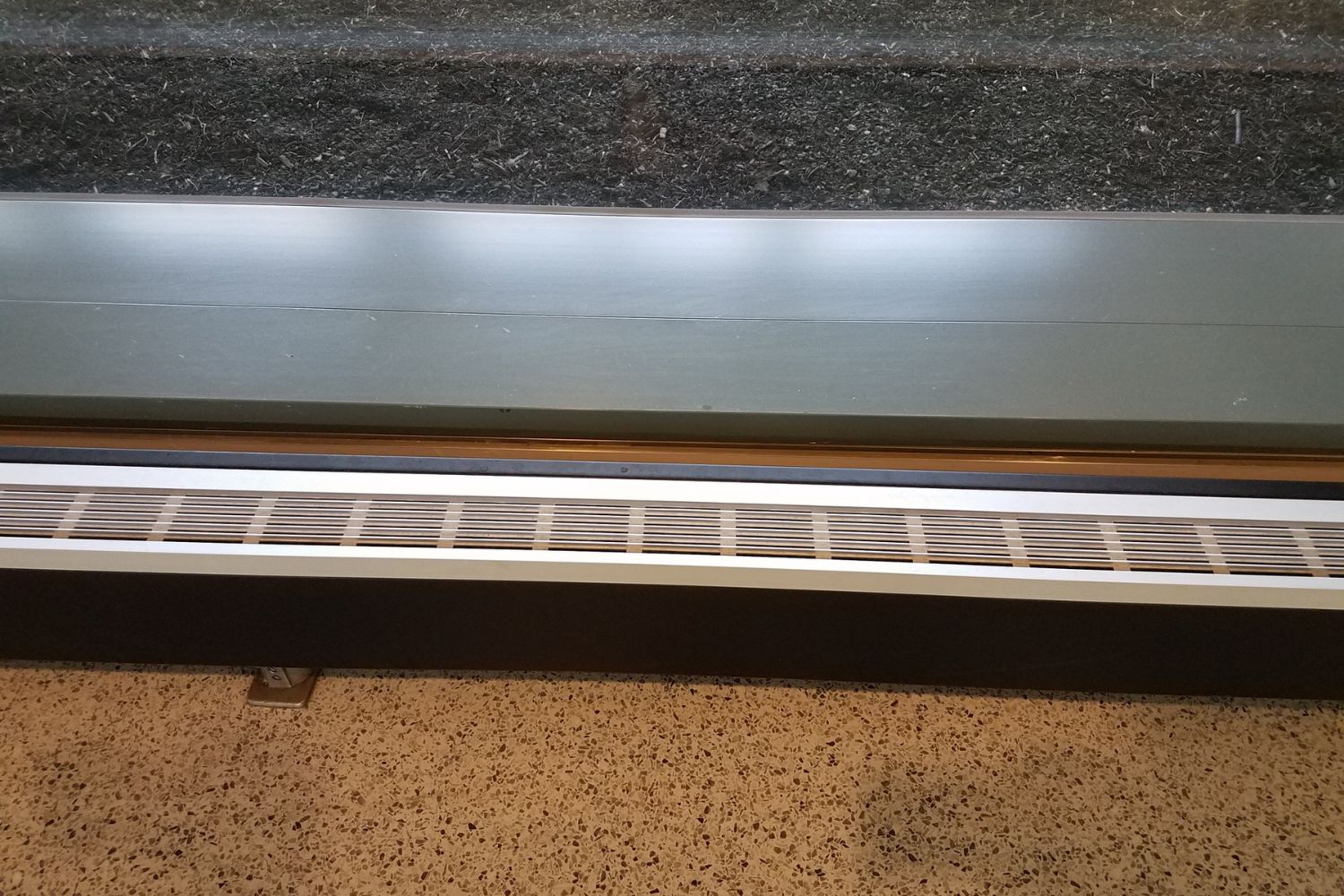
Benefits of Choosing Baseboard Heating
Baseboard heating has several benefits that make it a popular choice for homeowners. These advantages include safety, easy installation and maintenance, zone heating, and energy conservation.
Cost Effectiveness
Baseboard heaters generally have a lower installation cost than other types of heaters. This is partly because they’re easier to install than other types of home heat systems but also because homeowners can more easily control their heating in different rooms, lowering their energy costs as well.
“Electric heat is nearly 100 percent efficient, meaning all the power [electric heaters] consume gets converted to heat,” explains Haas. “Hydronic heaters … continue to give off residual heat from the warmed-up oil inside. This provides more even heating.” This also translates to lower running costs.
Easy Installation and Maintenance
Baseboard heaters are relatively easy to install, making them a convenient option for both new home construction and retrofits. They do not require ductwork or extensive renovations, which can be expensive and time-consuming. For example, a typical HVAC replacement cost is $7,500, and adding a new zone to improve heating in one area costs about $2,000 to $3,000 more. By comparison, installing three baseboard units in two or three rooms costs about $3,500.
Baseboard heating systems have minimal moving parts, reducing the risk of mechanical failure and the need for frequent repairs and cleaning. Overall, they provide a hassle-free heating solution with less maintenance than a traditional HVAC system.
Zone Heating
Zone heating is a significant benefit of baseboard heating. Zoning offers homeowners the ability to control and customize the temperature of individual rooms or zones in the house. As Haas explains, “You can have each heater set to different [temperatures] or group them so a whole room runs off one thermostat. This is great if you like to keep particular rooms warmer or colder than others.”
By personalizing the temperature of each room, homeowners can save energy by heating only those rooms that are actively used. Zone heating also allows homeowners to address temperature variations of individual rooms that can be caused by sunlight exposure, room size, or insulation levels.
Energy Conservation
The ability to control the temperature in individual rooms or zones means that the heat settings can be adjusted based on personal preferences and the specific needs of the area. Unlike forced-air heating systems, which rely on ductwork to distribute heat, energy-efficient baseboard heaters do not suffer from energy waste through the ductwork. The farther the vent is from an HVAC motor, the cooler the heated air becomes. But baseboard heaters have no heat loss issues since all the heat goes directly into the room in which it’s installed.
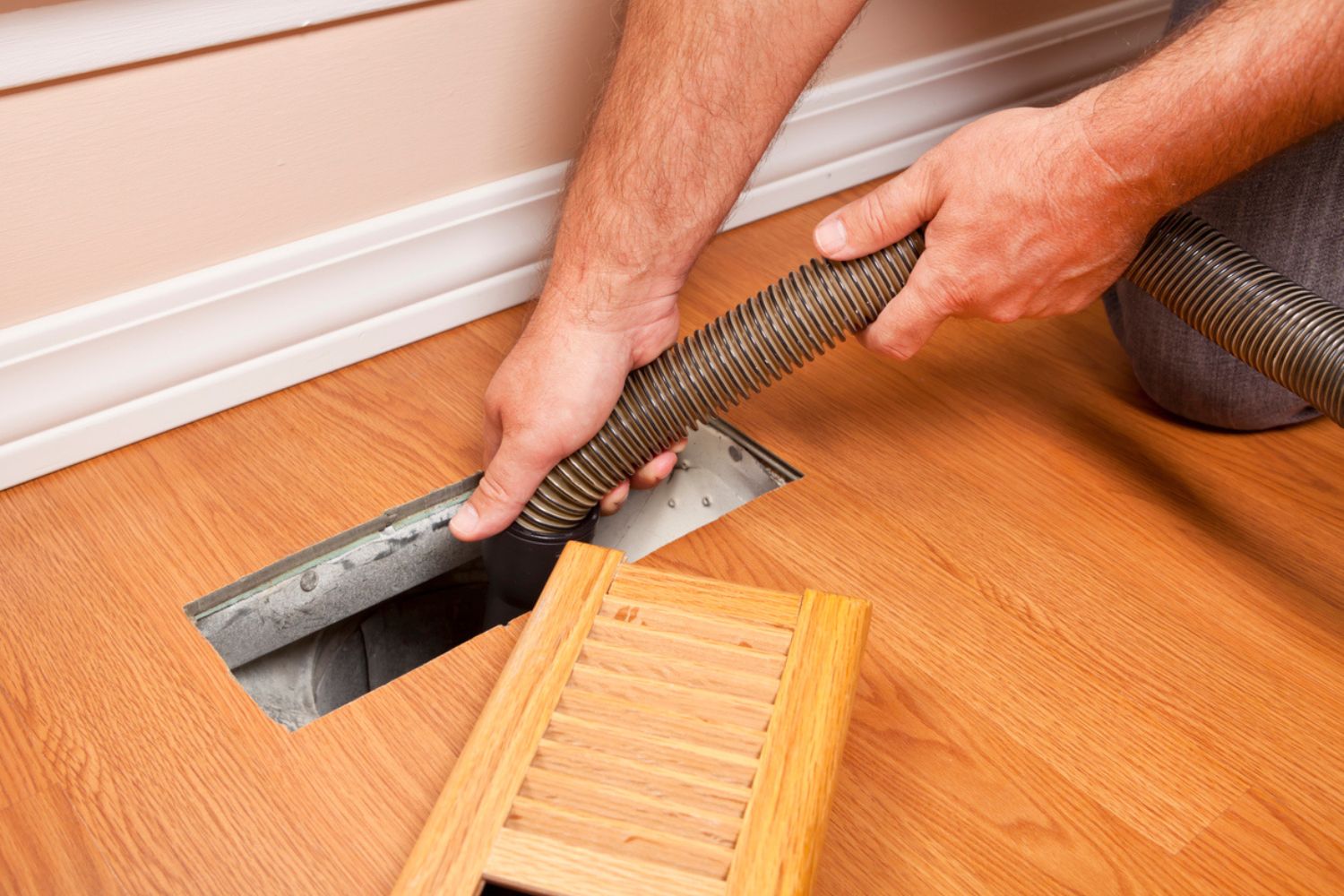
Baseboard Heating Installation: DIY vs. Hiring a Professional
Some homeowners know how to install baseboard trim, but undertaking a DIY baseboard heating installation is a different story. While those with extensive electrical knowledge may avoid dangerous installation errors, it’s recommended that homeowners with minimal DIY skills call a professional for installation. Hiring a heating and cooling pro ensures a correct setup that complies with local building codes and regulations. This is true whether it’s just a baseboard heater replacement or a full installation of new units.
“Installing and replacing baseboard heaters is not something a homeowner should try to do on their own,” warns Haas. “Most heaters are 240-volt and can pose serious safety issues if not done correctly. This is one of those projects you should always hire a licensed professional for.”
In fact, in some areas, local municipalities require some kinds of electrical work to be completed by a licensed professional. This is especially likely when the circuit breaker needs to be upgraded to meet current codes. The installation professional may also recommend the best areas to install baseboard heaters for maximum effect. While professional installation costs more, it can result in long-term savings through enhanced safety and energy efficiency.
How to Save Money on Baseboard Heating Cost
Homeowners can reduce their baseboard heating costs by following some helpful tips to enhance energy efficiency and optimize the performance of their heating system. Since a portion of the higher cost of baseboard heaters comes from running costs, homeowners can utilize several suggestions to save money over time.
- Thermostat management. Homeowners will want to set their thermostat to lower temperatures when they’re asleep or away and consider investing in a programmable thermostat that can automatically adjust settings based on their schedule.
- Seal up any air leaks. It’s recommended that homeowners check their doors, windows, and any other areas where air can escape or enter the home. By sealing the leaks with weatherstripping or caulking, they can improve the home’s efficiency and reduce heat loss as well as the correlating heating costs.
- Consider furniture placement. Homeowners can arrange their furniture to allow for more efficient heat flow. By avoiding blocking baseboard heaters, they can ensure even heat distribution and better efficiency.
- Take advantage of zone heating. Homeowners might want to consider closing doors to unused rooms to concentrate heat where it’s needed.
- Choose the right unit. With several types of baseboard heaters available, homeowners are encouraged to speak with an installation pro to make sure they choose the right unit for their home size, heating needs, and budget for installation as well as long-term costs.
- Add adequate insulation. Adding more insulation to a home can help keep energy costs down, especially when homeowners are using an electric baseboard heating system.
- Perform regular maintenance. Generally, baseboard heaters don’t require extensive maintenance and need to be cleaned by the resident only once or twice a year. By vacuuming the heating elements to remove dust, a homeowner can help prolong the life of their heating system.
- Get multiple quotes. Homeowners will want to shop around and get multiple quotes from reputable heating and cooling companies in their area to find a price that works with their budget.
Questions to Ask About Baseboard Heating Installation
Consulting with professional installers and asking relevant questions can help homeowners save money, avoid miscommunication, and gain a better understanding of the baseboard heating installation process.
- Are you licensed, bonded, and insured?
- Will you provide references?
- Do you have a portfolio of past baseboard heating system installations?
- What type of baseboard heating system is the best for my home?
- Can you provide a detailed price estimate?
- What is the average heated baseboard installation cost per unit in my area?
- Do I need any upgrades to my electrical system or additional wiring for the installation?
- How long will the installation process take?
- How will you keep my home clean during the installation process?
- What are the different zone options for my home?
- What is the most efficient placement of the baseboard heaters?
- What kind of maintenance is needed for the heating system?
- Do you provide warranties or guarantees on parts and labor?
- How can I leave a review of your work?
FAQs
Many homeowners who are considering baseboard heat installation are often unsure of the cost and the installation process. They can use these answers to some frequently asked questions to understand the downsides of baseboard heating, ways to increase the efficiency of the heating system, and the compatibility of air conditioning with baseboard heating. Understanding these aspects can help homeowners make informed decisions about which type of heating system is the best for their home.
Q. What is the downside of baseboard heating?
One concern about baseboard heating is the risk of burns from hot surfaces. These units are exposed in a room and produce significant heat that makes the units too hot to touch. Hydronic baseboard heaters don’t get as hot and are a safer option for homes with pets and children. Another downside of baseboard heating is the monthly cost to run an electric baseboard heating system, which is higher than traditional HVAC systems.
“Electricity is relatively expensive compared to other heating sources,” explains Haas. “At $0.16 per kilowatt per hour, electricity is more costly than natural gas or propane to heat the same size room. It’s recommended to have 3 watts per square foot. A 1,500-square-foot home would need 4,500 watts of baseboard heat. Every hour your heaters run, it consumes $0.72.”
Q. Is it cheaper to leave baseboard heaters on all the time?
A baseboard heating system is much more efficient when it runs constantly rather than being turned on and off throughout the day.
Q. Can you have AC with baseboard heating?
Yes. Many homeowners who use baseboard heaters opt for individual window AC units to avoid installing ductwork in the home. However, adding central air conditioning to a baseboard-heated house can help save money by reducing energy costs attributed to window AC units. Compared to a central AC system, window units are typically less efficient since they need to run longer to sufficiently cool a room.
Sources: Angi, HomeAdvisor, Fixr, HomeGuide

